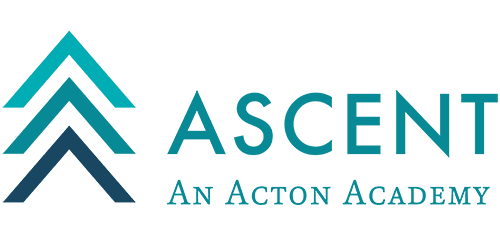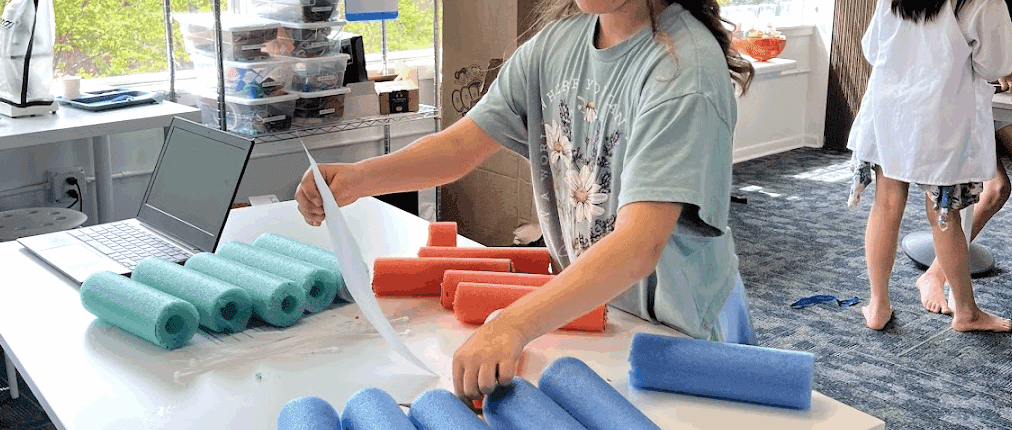Getting Into Flow: What It Means That Our Children Are Mastering This Skill
We talk a lot about process over outcome- about what excellent work really looks and feels like. In the next few posts, we’re pulling back the curtain to give you, our parents, a clearer picture of what actually goes into the goals your child sets, the challenges they pursue, and the daily grind of growth.
Children want to do hard, meaningful work. And at Ascent, they get that opportunity over and over again- sometimes in the form of a Quest challenge, sometimes through a tough moment with a friend, or in pushing past their own internal resistance.
One skill they’re learning, starting as early as age 4 and strengthening year after year, is how to get into flow.
“The best moments occur when a person’s body or mind is stretched to its limits in a voluntary effort to accomplish something difficult and worthwhile.”
Mihaly Csikszentmihalyi
Learning what flow is (and isn’t), how to enter it, and how to use it to discover and sharpen your gifts- that’s a major part of the Ascent experience. Flow is central to the Hero’s Journey. If you can identify your greatest gifts, learn to use them in flow, and apply them toward solving a problem that matters deeply to you, you’re well on your way to finding a calling.
But what does flow actually look like in a studio?
Here are some photos from this week- each showing learners fully immersed in challenges they’ve chosen for themselves.
Flow shows up all across our learning design. During Work Cycle, learners practice getting into flow in pursuit of their academic goals. What it looks like differs in each studio, but one thing is the same: they are doing it on their own.
In the Spark Studio, this process begins in a simpler, but no less powerful way. Work Cycle starts with a gathering: the children sit in a circle and share a song or activity to center the group. Then, they are invited to reflect quietly: What hard work do I want to do today? From there, they are set free to explore. Some head straight for a Work they’ve been thinking about. Others move more slowly- wandering, watching, stretching their bodies- before settling in. In Spark, flow looks different because there are no explicit goals or external motivators. The pull to each Work is fully intrinsic. At this age, children are naturally drawn to what they need: table washing, subtraction charts, metal insets. In a Montessori environment like this, getting into flow is the work. Every choice they make- what to do, where to sit, whether to keep going or shift gears- is building a set of invisible muscles: concentration, decision-making, self-motivation, time management. They may not be able to name it yet, but they are practicing the exact same thing their older peers are learning to master: how to choose hard, meaningful work and stay with it.
In Discovery and Explore, the Work Cycle begins with a Socratic Discussion. These are short, focused discussions on topics such as culture, work ethic, or even flow itself, that set the tone and spark motivation. From there, learners pull out their SMART goal sheets or open up Journey Tracker. They reflect on their long-term goals and make decisions in real time: What do I want to accomplish today? Where do I need to make progress? What’s going to help me focus?
They gather tools (books, materials, computers) and choose a spot that helps them concentrate. This moment of choosing where to sit, what to work on, and how to begin, requires more than it seems (read on!). It takes self-awareness and discernment. They’re learning to silence distractions, overcome the urge to delay or avoid, and commit to the task they’ve chosen. It’s a skill many adults struggle with: deciding what matters most, and sticking with it long enough to make real progress. At Ascent, your children are learning how to do this now- through daily practice, in a space that trusts them to rise to the challenge. And as they build this muscle, they’re preparing to pursue a calling with focus, clarity, and purpose.
Of course, flow doesn’t just happen. It emerges when several conditions are met- when a learner is stretched but not overwhelmed, working on something that matters to them, and receiving feedback along the way. These conditions are built into the challenges and works in the studios each day. Some of the core ingredients:
- The challenge is real, but not impossible. It pushes the learner to their limits.
- It matters to them. There’s a reason they want to do it.
- There’s feedback. They can see how they’re doing and how to adjust.
- The goal is clear. They know what they’re working toward.
- Their focus is fully engaged. They are all-in.
From a bigger-picture view, flow is one of the most valuable skills we can offer children. Practicing it early- and often- has lasting impact:
Stronger Intrinsic Motivation
Children who frequently experience flow are more likely to fall in love with learning. They pursue challenges for the joy of it, not just for grades or praise. They also get to discover what really lights them up.
Higher Emotional Resilience
Flow pushes learners to stretch themselves, and stick with it. That builds confidence and a more grounded sense of self, both of which are protective when life gets tough.
Deeper Thinking
Flow strengthens problem-solving, creativity, and focus. It helps the brain connect ideas, recognize patterns, and adapt to new challenges.
Greater Attentional Control
Children who practice entering flow are better able to sustain attention on tasks that matter, even when distractions are everywhere.
We encourage you to explore flow with your learner, as we do in the studio, with simple questions that draw attention:
- Where in the studio have you found the most flow?
- When in the day do you tend to get into flow?
- What are you doing when you find flow?
- What do you look like when you find flow?
- How would you want to get into flow tomorrow?
A great wrap up to these thoughts: Just heard in the studio (as I’m writing this post!!), a 7-year-old learner asks a slightly more experienced 7-year-old, “Can you help me get into flow?”

















